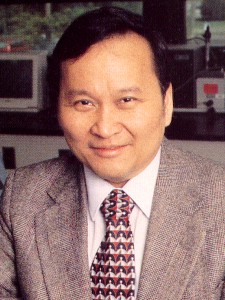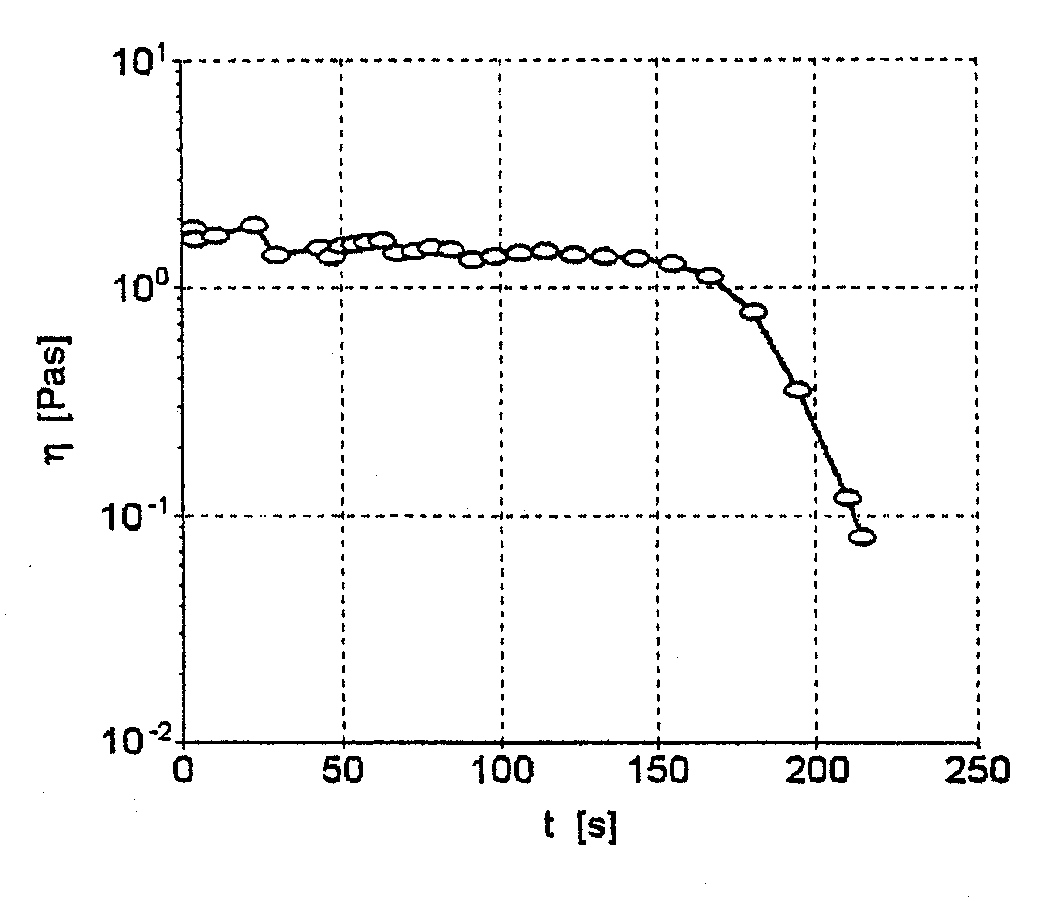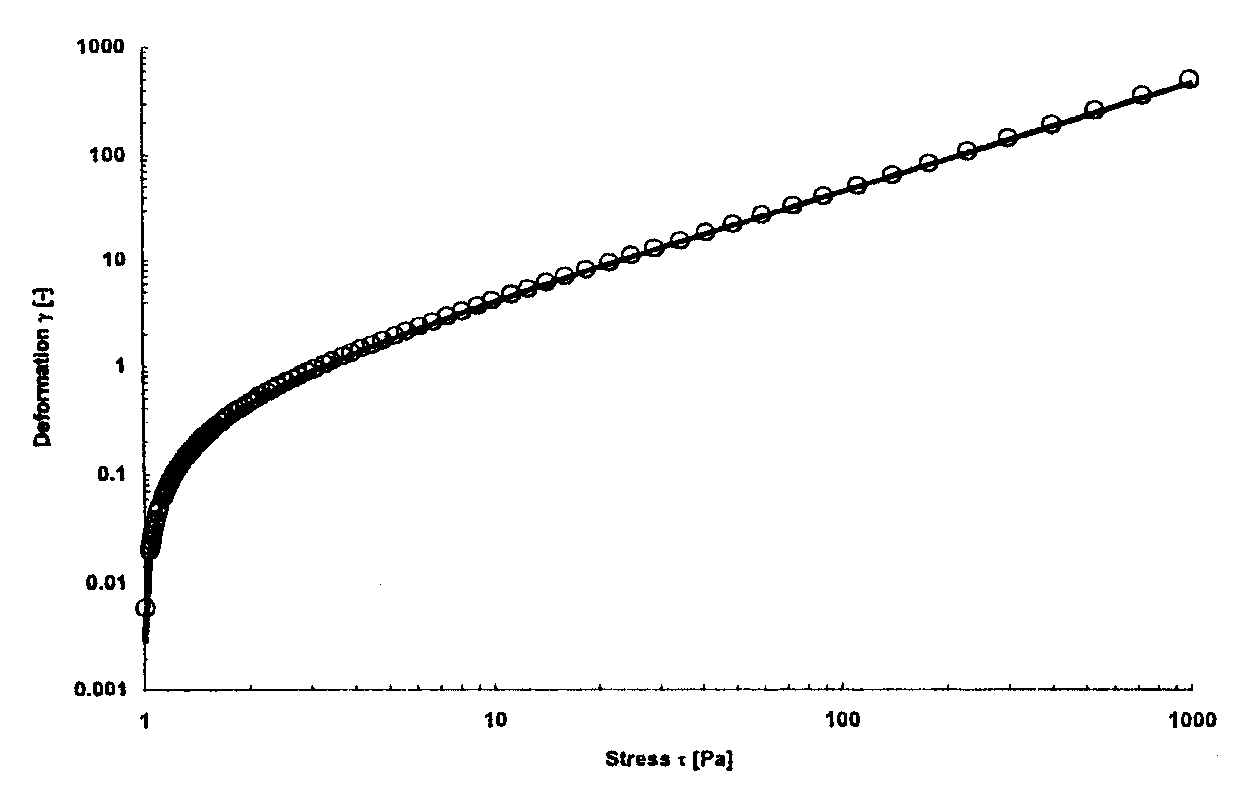 |
Rheology BulletinVol. 69, No. 1 (January 2000)Rakesh Gupta, Editor |
 |
Rheology BulletinVol. 69, No. 1 (January 2000)Rakesh Gupta, Editor |
[Rheology Bulletin Home Page][Recent Issues]
ContentsExecutive Committee - 1999-2001
Committees
72nd Annual Meeting
|
|||||||||||||||||||||||||||||||||||||||||||||||||
| Technical Program Chairs | ||
| Saad
A. Khan Department of Chemical Engineering North Carolina State University Raleigh, NC 27695 (919) 515-4519; Fax (919) 515-3465 E-mail: khan@eos.ncsu.edu |
Gareth
H. McKinley Department of Mechanical Engineering Massachusetts Institute of Technology Room 3-250 Cambridge, MA 02139 (617) 258-0754; Fax: (617) 258-8559 E-mail: gareth@mit.edu |
|
| Local Arrangement Chair | ||
| Donald
G. Baird Department of Chemical Engineering Virginia Tech Blacksburg, VA 24061 (540) 231-5998; Fax: (540) 231-2732 E-mail: dbaird@vt.edu |
||
The technical program will feature approximately 10 minisymposia covering the full spectrum of current rheological activity. In addition to the Bingham lecture, there will be plenary lectures; these will be given by Professors Ludwig Liebler (Joint Research Laboratory of CNRS/Elf Autochem, France) and Robert K. Prud’homme (Princeton University).
Given the dates of the International Congress this year and the improved efficiency provided by web-based abstract submissions, a full Call for Papers will not be published till the July 2000 issue of the Rheology Bulletin. The program organizers anticipate that web-based abstract submissions will be activated from September 1, with a final submission deadline of October 27, 2000. Albert
Co received the Distinguished Service Award of The Society of Rheology at
the 71st Annual Meeting in Madison. He is the fifth recipient of this honor,
which is given infrequently at the discretion of the Executive Committee for
exceptional service to the Society.
Albert
Co received the Distinguished Service Award of The Society of Rheology at
the 71st Annual Meeting in Madison. He is the fifth recipient of this honor,
which is given infrequently at the discretion of the Executive Committee for
exceptional service to the Society.
The subtitle of this announcement would have had little meaning less than a decade ago. In his “Comments from the President” that appeared in the January 1995 Rheology Bulletin, Bob Armstrong requested a volunteer to create and maintain the Society of Rheology Home Page on the World Wide Web. He went on to explain “... that this would be an excellent means for us to disseminate information to members in a timely way, and also to reach others interested in rheology and let them know about the activities of the society.” Albert responded to this highly understated request and became our first and only Webmaster. With equally understated style and single-minded dedication, Albert Co has provided our society and the field of rheology with an extraordinary resource.
Less than five years later, glowing testimony to the impact of Albert's stewardship comes from every corner of the Society, especially meeting organizers. “Serving as program chair with Albert as Webmaster is one or two orders of magnitude less work than it was 10 years ago.” Always generous when it comes to sharing credit, Albert notes that Bob Powell, as Technical Program Chair for the Columbus Meeting, was instrumental in establishing abstract submission over the Web because he was willing to accept the risk of the new technology.
Albert has recently secured the new base URL “www.rheology.org” (alternative: “www.societyofrheology.org”) and taken yet another important step toward making our website a natural portal for rheology information on the internet. The original URL “www.umche.maine.edu/sor/” still works and serves to remind us all of the generous support the Society has received from the Chemical Engineering Department at the University of Maine since the inception of our e-endeavor.
Albert Co received a B.S. from the University of the Philippines in 1972 and a Ph.D. from the University of Wisconsin - Madison in 1979. He then joined the faculty in Chemical Engineering at the University of Maine in Orono where he is currently Associate Professor. Albert's research interests center around polymer processing, non-Newtonian fluid dynamics, and transport phenomena.
The Society of Rheology is certainly very much in debt to Albert Co, the “cheerful perfectionist.”
Andrew Kraynik
72nd
Annual Meeting
Hilton Head, South Carolina
February 11 - 15, 2001
73rd
Annual Meeting
Bethesda, Maryland
October 20 - 25, 2001
74th
Annual Meeting
Minneapolis/St. Paul (tentative)
October 13 - 18, 2002
The Rheology Bulletin publishes papers on the applied aspects of Rheology which are intended for the non-specialist. Appropriate topics include the application of rheological principles to a specific system, instrumentation for rheological measurements, description of interesting rheological phenomena, and the use of well-established rheological techniques to characterize products, processes or phenomena. Papers describing historical aspects of the practice of rheology and how these have influenced current trends are welcome. Also welcome are papers that address the present and changing status of rheological education. Consultation with the Editor prior to manuscript submission is encouraged.
Martin Liehr
Haake
53 West Century Road
Paramus, NJ 07652
Modern controlled-stress rheometers offer opportunities for determining a material’s yield point. The yield stress is the minimum stress needed to initiate flow. At stress values below the yield stress, a material should deform like an elastic solid. Above the yield stress, flow occurs, and the material deforms continuously. A plot of deformation versus stress should allow for the determination of the yield stress. However, this plot can exhibit unusual behavior. Such observations are discussed here.
For a yield stress material, if we increase the stress exponentially with time and monitor the resulting strain (on logarithmic coordinates), we expect to see the behavior shown in Figure 1. In practice, however, two disturbing effects arise; these are illustrated in Figure 2, and they make it difficult to identify the yield point.

Figure 1. Typical deformation versus stress curve for a
material with a yield point.
Firstly, at the beginning of the test, a very rapid increase in strain occurs that gives way to a curve of slope unity. This is followed by another accelerated increase of deformation (Figure 2, upper curve). The initial region is often neglected and is explained to be the effect of inertia. If this were true, the ramping time should have an influence on this behavior. In fact, as shown in Figure 3, this start up behavior is observed independently of the ramping time employed. Longer times actually lead to an even larger initial slope, instead of a slope that is closer to the value of unity.

Figure 2. Practically observed deformation versus stress curves.

Figure 3. Influence of ramping time on the deformation versus stress
behavior.
Secondly, after passing through what appears to be the yield point, the material shows a large increase in deformation. However, the deformation slows down upon a further increase in the stress (Figure 2, lower curve); this indicates an increasing resistance to flow. If the data are plotted as the ratio of the instantaneous shear stress to the instantaneous shear rate (an apparent viscosity), no increase in resistance is noted with increasing time. This absence of shear thickening is shown in Figure 4.

Figure 4. Viscosity versus time determined from data in yield point test.
To clarify these phenomena, we take a closer look at what deformation behavior we may expect on a theoretical basis for purely elastic and purely viscous materials.
(a) Elastic solids
Elastic solids follow Hooke's law:
| t = G g | (1) |
which implies a slope of unity on logarithmic coordinates of a plot of shear strain versus the shear stress. Therefore, yield stress materials should exhibit a slope of unity before the yield point.
(b) Viscous fluids
Viscous liquids follow Newton's law of viscosity:
| t = h (d g /dt) | (2) |
where it is assumed that the viscosity h is constant. If the shear stress increases linearly with time, it can be replaced in the above equation with at, where “a” is a constant. Upon rearranging Equation 2 and integrating the result, it is found that the strain increases quadratically with time, or equivalently quadratically with stress. Consequently, the slope of strain versus stress is 2 on logarithmic coordinates. This result is independent of the ramping time and the liquid viscosity, and is indeed observed in experiments on Newtonian standards.
If instead of increasing the stress linearly, we increase the stress exponentially with time:
| t = exp(at) | (3) |
in which “a” is a constant. Equation 2 can be integrated again to give strain as a function of time. The logarithm of the strain can then be differentiated with respect to time and Equation 3 employed to eliminate time in terms of the shear stress. The final result is:
| d log g/d log t = exp(at)/(exp(at) – 1) | (4) |
At the beginning of the experiment, t = 0, and the slope given by Equation 4 has a limiting value of infinity. At very large times, however, the slope approaches the value unity. For purely viscous materials, therefore, the deformation versus stress curve begins with an infinite slope, and it bends toward a limiting slope of unity if the stress is increased exponentially. This behavior is shown in Figure 5, and there is excellent agreement between data and the predictions of Equation 4.

Figure 5. Measured and calculated deformation as a function of stress for
a Newtonian oil of 100 Pa-s viscosity. The stress is increased
logarithmically from 1 to 1000 Pa in 300 s.
The question that arises immediately is, “What yield points have we seen in Figure 2?” The answer is that only materials with a real yield point start with a slope of unity from the very beginning. After passing through the yield point, the material behaves as a viscous liquid. Therefore, we see a strong incline originating from the yield point and bending toward a slope of unity. The limiting slope of unity may not actually be reached because the material may change its flow behavior and become shear thinning; due to a continuously lessening resistance to flow, the deformation for a shear thinning material must increase more rapidly relative to a Newtonian material.
In view of the foregoing, we can expect to find two “yield points” or, more correctly, two points of changing properties: (i) the yield point, where the material changes its behavior from being a solid to becoming a Newtonian liquid. (ii) the point of critical stress or shear rate where the material becomes a shear thinning fluid.
What criteria can we use to judge if a given deformation versus stress curve really shows a yield point or not? There are four things to look for.
One indicator is the value of the deformation at which the yield point is found. As a rule of thumb, the yield point is doubtful if the strain is greater than unity.
Second, we may represent the very same data as viscosity versus shear rate. We may find that the shear rate corresponding to the stress value of interest is already in the shear thinning region.
Third, as derived in this paper, the shape of the deformation versus stress curve reveals the secret by itself. If there is a yield point, the slope d (log g)/d (log t) has to be unity from the beginning.
Fourth, we can run a creep test to see if this will give a finite deformation indicating a yield point or if it will show a constant rate of deformation indicating flow.
| THE SOCIETY OF RHEOLOGY c/o American Institute of Physics 2 Huntington Quadrangle Suite 1N01 Melville, NY 11747 |
[Rheology Bulletin Home Page][Recent Issues]
[/sor/mailto.htm] Updated 19 February 2019 |